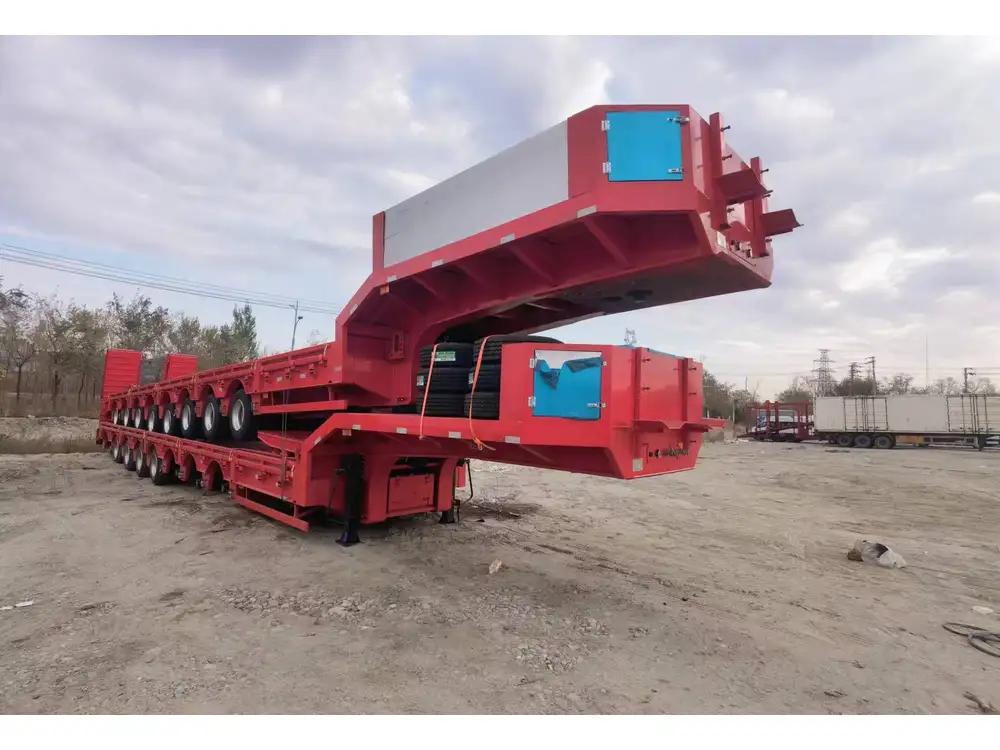Understanding Dump Trailers and Their Capabilities
What is a Dump Trailer?
A dump trailer is a specialized trailer designed for transporting heavy loads with the capability of unloading its cargo by raising the trailer bed. These trailers come in various sizes and configurations, catering to different types of hauling needs, including construction materials, debris, or equipment. They have become indispensable in industries where efficient transportation and unloading are crucial.

Types of Dump Trailers
Single Axle vs. Tandem Axle:
- Single Axle Dump Trailers: More maneuverable and best for lighter loads.
- Tandem Axle Dump Trailers: Greater stability and higher load capacity, making them more suitable for heavier loads like skid steers.
Gooseneck vs. Bumper Pull:
- Gooseneck Trailers: Offer improved stability and can handle heavier weights, making them ideal for hauling equipment.
- Bumper Pull Trailers: Easier to hitch and unhitch, but may have limited weight capacity.
Manual vs. Hydraulic Dump Mechanism:
- Manual Dump Trailers: Cost-effective but require more labor to unload.
- Hydraulic Dump Trailers: Easier unloading with minimal manual labor, increasing efficiency.
Importance of Payload Capacity
The payload capacity of a dump trailer significantly influences its ability to transport various equipment safely and effectively. Understanding the Gross Vehicle Weight Rating (GVWR) is essential. This rating not only considers the weight of the trailer but also includes the maximum load it can carry, ensuring that haulers do not exceed safe operational limits.
Can a Dump Trailer Haul a Skid Steer?

Assessing the Weight of a Skid Steer
Skid steers, commonly used for a variety of construction and landscaping tasks, generally weigh between 1,500 and 3,500 pounds, depending on their size and model. This weight must be carefully matched to the dump trailer’s payload capacity.
| Type of Skid Steer | Average Weight |
|---|---|
| Compact Skid Steer | 1,500 – 2,200 lbs |
| Mid-size Skid Steer | 2,200 – 2,800 lbs |
| Large Skid Steer | 2,800 – 3,500 lbs |
Evaluating Dump Trailer Specifications
To determine if a dump trailer can efficiently and safely haul a skid steer, you must evaluate:
- Payload Capacity: Check the specified limit against the weight of the skid steer.
- Axle Configuration: For larger skid steers, a tandem axle dump trailer is recommended for better distribution of weight.
- Towing Vehicle Compatibility: Ensure that the vehicle used to tow the dump trailer is capable of handling the combined weight of the trailer and skid steer.
Safety Considerations
When hauling a skid steer, safety is paramount. Key considerations include:
- Proper Weight Distribution: Ensuring the skid steer is centered on the trailer will help prevent swaying and maintain control during transport.
- Securing the Load: Utilize ratchet straps or chains to secure the skid steer to the trailer. Failing to do so can result in a dangerous load shift while driving.
- Braking Capacity: The tow vehicle must have adequate braking power to handle the additional weight of the trailer and skid steer.

Choosing the Right Dump Trailer for Hauling Skid Steers
Key Features to Look For
- Weight Rating: Always opt for a dump trailer that exceeds the total weight of the skid steer and any additional equipment or materials you may be carrying.
- Ramp Design: Ensure the trailer has suitable ramps for easy loading and unloading of the skid steer.
- Durability: Trailers constructed from heavy-duty materials will last longer and provide better support for heavier loads.
Recommended Dump Trailers for Skid Steer Hauling
| Trailer Model | Weight Capacity | Features |
|---|---|---|
| Model A | 5,000 lbs | Tandem axle, hydraulic lift, removable ramps |
| Model B | 7,000 lbs | Single axle, low deck height, reinforced frame |
| Model C | 10,000 lbs | Gooseneck design, heavy-duty construction |

Best Practices for Hauling Skid Steers
Pre-Transport Checklist
Before hitting the road, ensure:
- Tire Pressure: Adequate tire pressure on both the dump trailer and skid steer.
- Lights and Brakes: Functionality check on all trailer lights and brakes.
- Unload Area Assessment: Identify a safe and clear area for unloading at the destination.
Driving Tips
- Acceleration and Braking: Take it slow; accelerate gently and allow more distance for braking.
- Cornering: Make wider turns to avoid tipping or losing control.
- Height Awareness: Be mindful of overpasses or low bridges that may obstruct the height of the combined load.

Post-Transport Recommendations
- Inspection: After unloading, inspect both the skid steer and trailer for any damage or wear.
- Regular Maintenance: Conduct regular inspections and maintenance on the dump trailer to ensure it remains in optimal condition.
Conclusion: Streamlining Operations with the Right Equipment
In conclusion, while a dump trailer can effectively haul a skid steer, the choice of trailer must be astutely considered based on the skid steer’s weight, the trailer’s specifications, and safety measures. An informed decision not only enhances operational efficiency but also ensures safety on the road.
Investing in quality dump trailers tailored for heavy equipment hauling will facilitate seamless operations in the construction, landscaping, and agricultural domains. As manufacturers, ensuring these specifications and practices are adhered to will significantly benefit all operators involved in transporting heavy machinery, ultimately improving project timelines and safety.
By understanding the complexities involved in selecting the right dump trailer for hauling skid steers, you position yourself to meet your hauling needs effectively. Embrace the right equipment and procedures to streamline your operations, providing both reliability and safety in every transport scenario.



